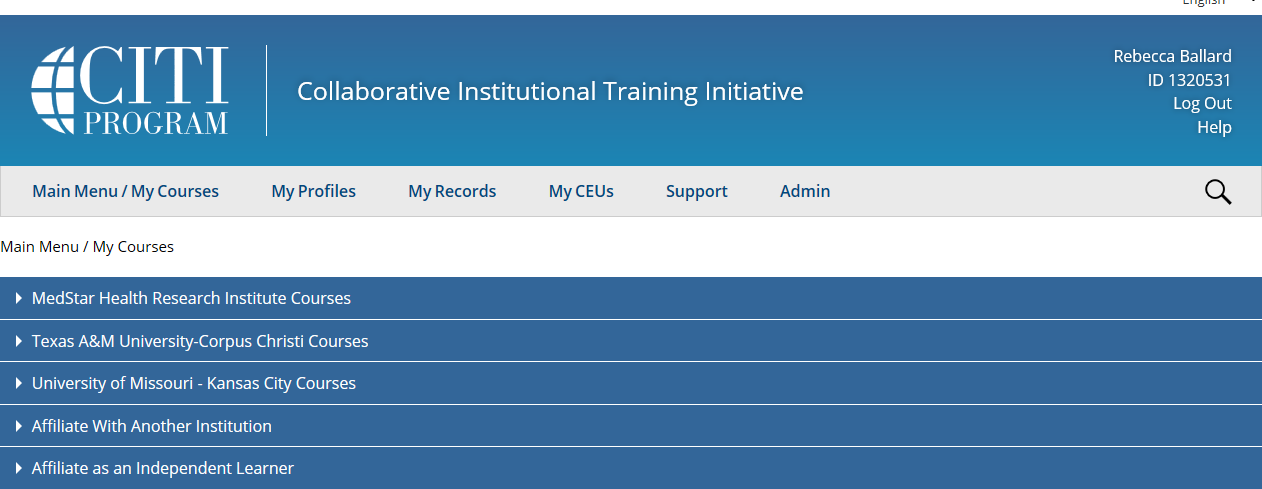IBC Required Training
The Institutional Biosafety Committee seeks to ensure the qualifications of all IBC personnel who handle rDNA and biohazardous materials to enable them to carry out their responsibilities in compliance with applicable guidelines and regulations.
The IBC must consider the training and experience of personnel involved in conducting research as part of its protocol review and approval. Training must be completed before the IBC can release your approval or continuing review renewal letter.
Click here to access CITI.
What training is required for Research or Laboratory Personnel when working with biohazards?
| Course | When Required |
| CITI: Biosafety/Biosecurity – Researchers | Required prior to being added to an IBC protocol |
| CITI: NIH Recombinant DNA Guidelines - Biosafety/Biosecurity | Required when working with rDNA |
| CITI: Nanotechnology - Basic Course | Required when working with nanotechnology |
Work specific training
The BMBL requires work specific training be provided by the Principal Investigator, Laboratory Manager or Lab Supervisor in the practices and operations specific to the laboratory facility.
The director or person in charge of the laboratory is responsible for providing or arranging the appropriate training to personnel.
Generally, this training should cover the nature of the hazards and how to safely work with the hazards present, including:
- General knowledge of the biohazardous agents;
- Nature of hazards associated with biohazards and necessary precautions to prevent exposure;
- Personnel health and status and how biohazards may impact one’s susceptibility to infection. All laboratory personnel should be provided with information regarding immunocompetence and conditions that may predispose them to infection;
- Where to find the biosafety and operational manuals;
- How to handle biohazardous agents under the supervision of trained faculty;
- Identification of when to use and how to use proper Personal Protective Equipment (PPE);
- How to properly use safety equipment such as biological safety cabinets (BSC) or centrifuge safety cups to reduce aerosols;
- Correct use of lab equipment, proper procedures, and how to conduct routine inspections for potential malfunctions;
- Where to place waste solutions and contaminated materials or equipment;
- How to decontaminate a work area after routine operations; and
- What to do when an accidental spill occurs.
Other training required depends on the hazards involved.


